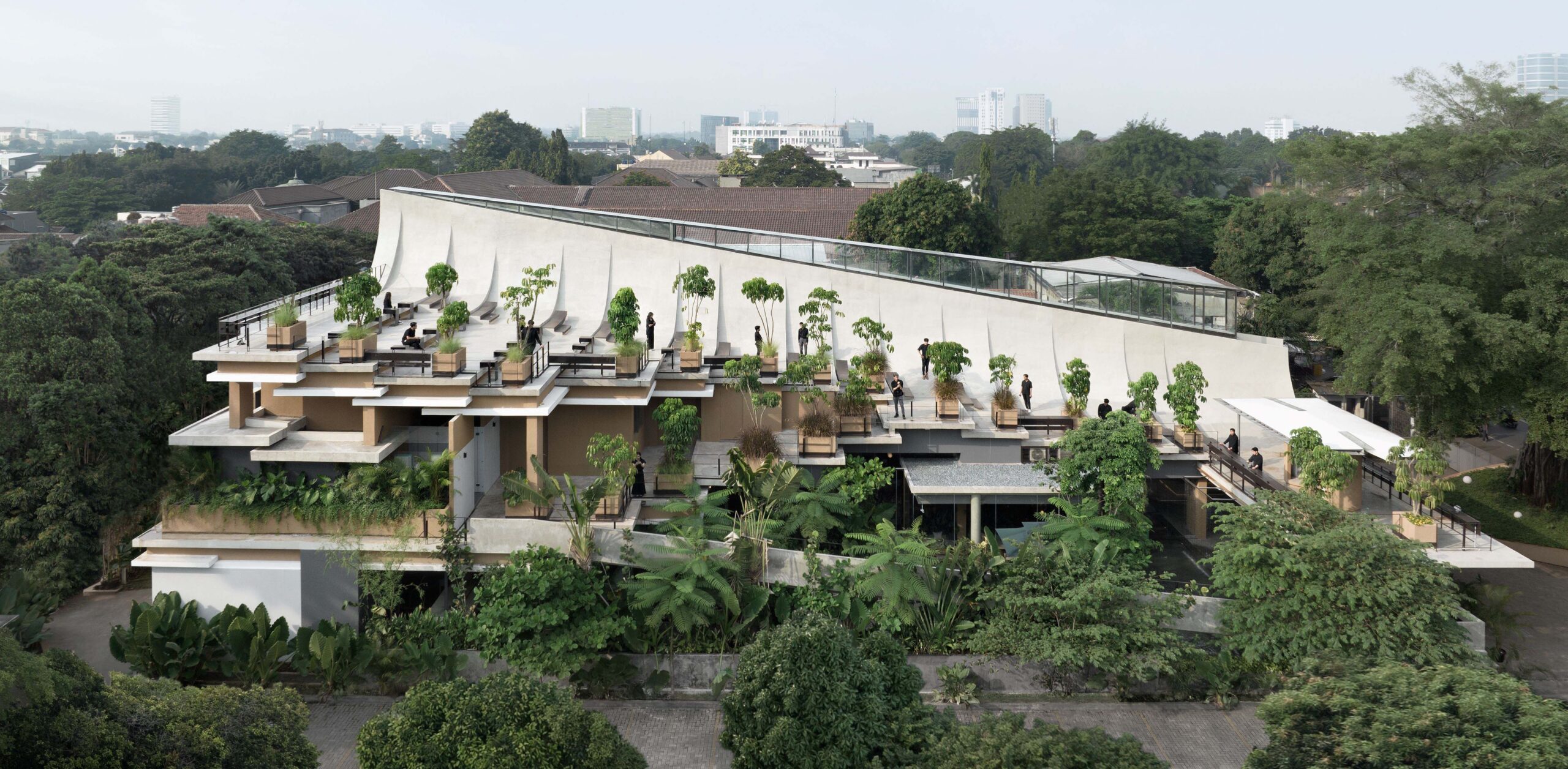UnTAG uses plants and earthen textures for biophilic villa in India


Architecture practice UnTAG has created a home in the Western Ghats mountain range, India, which has terracotta-hued spaces and integrated planting.
Named Villa Prakriti after the Sanskrit term for mother nature, the 418-square-metre (4,500-square-foot) home steps down the hillside overlooking the surrounding mountain range.
Informed by biophilic design principles, Mumbai-based unTAG designed the home to maximise its exposure to natural light, ventilation and plants, which have been incorporated into all of its spaces.

"The core concept of Prakriti lies in its deep reverence for nature - not as a backdrop, but as the very origin of life and space," UnTAG principal architects Gauri Satam and Tejesh Patil told Dezeen.
"The home doesn't mimic nature, but aspires to live in its likeness - adaptive, rooted, generous, and ever-evolving," they continued.
"At its heart is the idea of biophilic living, where green inserts, natural light, earthen textures, and native landscape are not aesthetic decisions, but fundamental design elements that guide form, flow, and feeling."

Nestled into its sloping site, the home's central living area is naturally ventilated by walls of perforated brickwork and sliding glass, with a large circular skylight overhead giving views of the sky and plants.
Extending outwards onto a swimming pool patio and upwards to a rooftop terrace, these living areas are dotted with large planters in earth-coloured concrete, several of which incorporate seating areas.

The rectilinear form of the living space connects two volumes on either side – a kitchen to the northeast and two bedrooms to the southwest – topped with oversized tiled gable roofs that mark the highest points of the building before it "cascades" down the hill.
"The greatest challenge was the contoured site, which we approached not as a problem, but as a poetic opportunity, allowing the house to gently cascade with the terrain instead of resisting it," explained Satam and Patil.
"This approach, paired with native plantings, verandahs and balconies that frame distant views, and minimal site intervention, ensured a home that feels discovered, not inserted - an ecological gesture more than an architectural one."
Between the two main structures of the home is a mango tree that the studio describes as the point around which the home "narrates its story".
The living area to the east overlooks this tree through a large glazed opening, while the bedrooms in the volume opposite are accessed by passing beneath it and up a staircase alongside.

"The home's plan is centred on this tree, and the spaces choreograph around it as if orbiting a quiet deity," said Satam and Patil.
"Architecturally, it is framed through entry sequences, visual axes, and the living room, where it becomes a living sculpture."

Further down the hill, the home's driveway leads past a lily pond, bamboo trellis and garden pavilion to a garage, lawn and well alongside the village road.
Elsewhere in India, Studio Sangath recently completed a villa near Ahmedabad, with a geometric layout of terracotta-toned forms organised around a series of terraces.
The photography is by Pranit Bora Studio.
The post UnTAG uses plants and earthen textures for biophilic villa in India appeared first on Dezeen.

















































